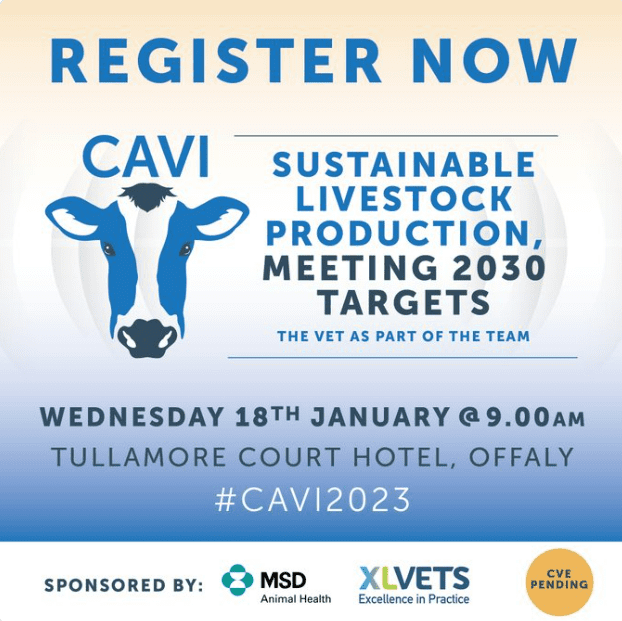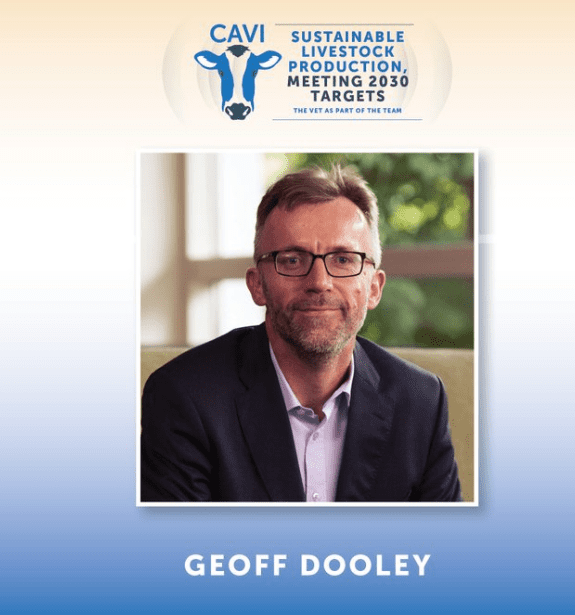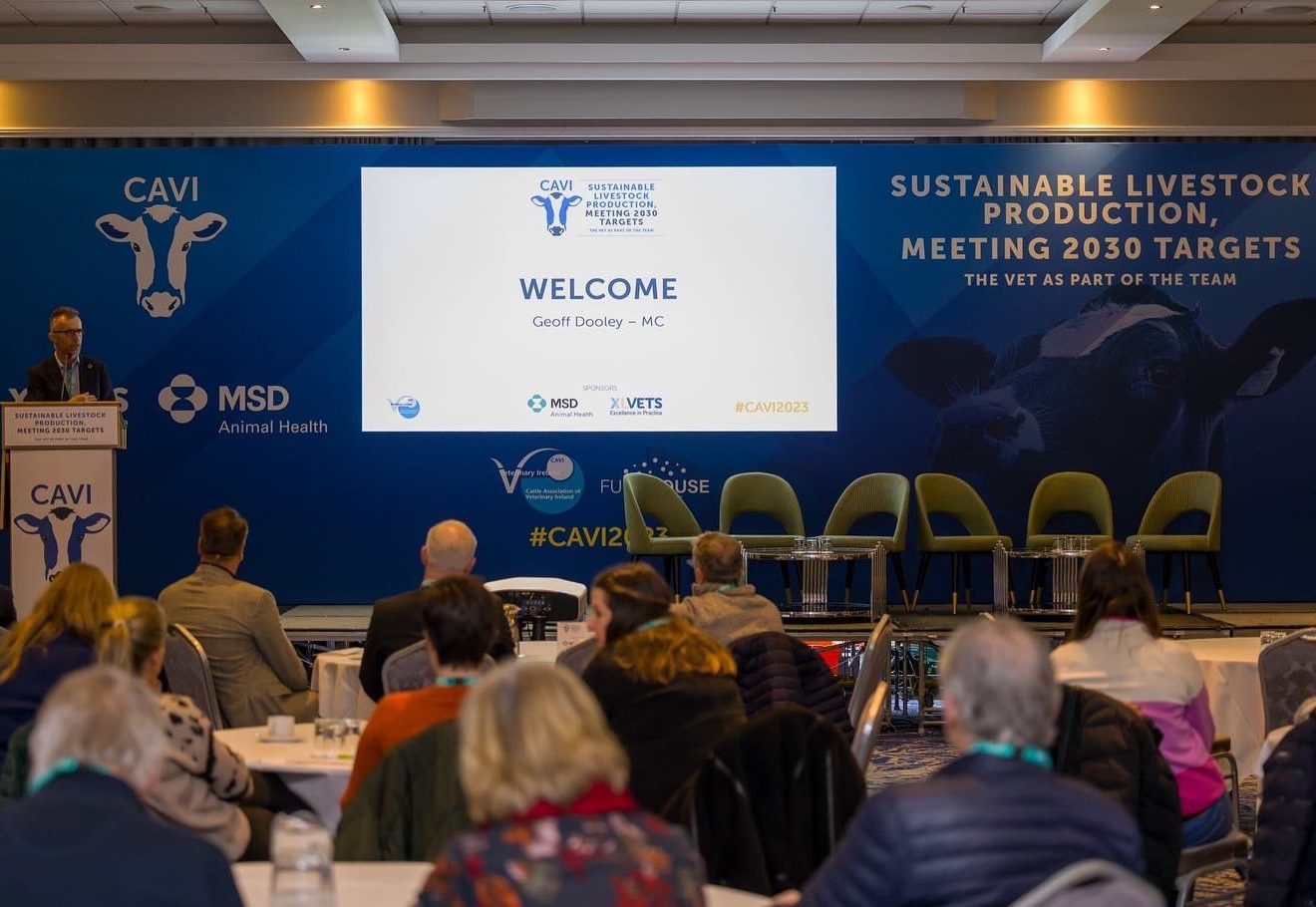I had the privilege of being MC at the recent Veterinary Ireland Conference on Sustainable Livestock Production.
My opening comments were as follows:
Introduction
My name is Geoff Dooley – and it is a privilege to be your MC today. By way of background, I was closely involved with the founding and development of XLVets for over a decade, and it is a delight to see XLVets as a sponsor of today’s event alongside MSD Animal Health.
I am also a livestock farmer from Co. Limerick, and I have long been fascinated by the relationship between farming and the environment. Almost 20 years ago, in 2003, I was awarded a Nuffield Farming Scholarship with a study titled – Bioenergy: Empowering Farmers in a Globalised Economy.
At that time, I was interested in the potential of renewable energy and renewable fuels from agriculture to solve environmental and economic challenges. And of course, the same challenges and questions are circulating today – the big difference is that they are more mainstream and more urgent.

Context and Targets
Looking at today’s conference title Sustainable Livestock Production – Meeting 2030 Targets First, it is worth noting that Sustainability is a broad term. Its breadth is reflected in the United Nation’s 17 Sustainable development goals. However, the qualifying phrase “Meeting 2030 Targets” narrows the focus.
So, what are the targets? The most prominent national target – formally legalised – is to reduce GHG emissions by 51% by 2030 (relative to 2018 emissions) on the way to Net Zero GHG emissions by 2050. In a sense, we could say the 2030 target – is a way marker towards the 2050 target of Net Zero.
The reason for a 51% reduction by 2030 and Net Zero by 2050 is that it aligns Ireland with the 2015 Paris Climate Accord of limiting global warming to well below 2C, preferably to 1.5 degrees Celsius, compared to pre-industrial levels. It is worth noting that we are already at about 1.2C of additional heating. Therefore, even the best and most optimistic outcome of 1.5C is worse than today.
But it is not a blanket 51% reduction for every sector. Different sectors such as electricity, transport, buildings, industry, LULUCF and agriculture have different targets. For agriculture – which is responsible for 37.5% of Ireland’s emissions, the legally binding target is a 25% reduction by 2030. So arguably, agriculture has gotten off lightly as other sectors contribute much more to the adjustment.
Our agricultural emissions are mainly methane from livestock and nitrous oxide due to using nitrogen fertiliser and manure management. And agricultural and national emissions continue to rise, so the time window to meet the targets is always closing.
Why is this Difficult?
This is a tricky situation; a 25% reduction is a hard challenge for agriculture. The Environmental Protection Agency projects that IF Irish farming implemented all the measures identified in the Teagasc Marginal Abatement Cost Curve and all the additional measures included in the Climate Action Plan agriculture could potentially achieve a 21% reduction by 2030 (leaving a 4% gap).
Why is this Non-Negotiable?
As we begin today’s conference – I think it is worth reflecting that Sustainable livestock Production is no longer about being the “right thing to do” or an optional extra. Sustainable livestock production is about managing business risk and being resilient in the face of market and technological volatility and in Europe and North America, it is about maintaining a license to operate. There isn’t a future for unsustainable livestock production. And this a very transparent world where greenwashed claims of virtue carry a high reputational risk.
The imperative of sustainability calls for the livestock sector to move beyond the conventional approach of just thinking in terms of inputs and outputs. We must start thinking in terms of outcomes. We need to see outcomes rather than outputs as the opportunity and the source of value.
What Needs to Happen?
As Peter Drucker observed – “The greatest danger in times of turbulence is not the turbulence – it is to act with yesterday’s logic.”
Drucker points out that any organisation, community or sector that wants to adapt, learn and find new solutions must be willing to look at the information that disconfirms its past beliefs and practices. To stay relevant and vital, we must search out surprises and look for what is startling, uncomfortable and possibly even shocking.
Leave No One Behind
This endeavour requires the involvement of all value chain stakeholders food processors, vets, pharmaceutical companies, banks, feed companies, fertiliser companies, feed additive companies, educators and universities. No individual, organisation or sector can do what needs to be done on their own, which is why I love the tagline for today’s conference – The Vet as part of the team. There are a lot of players in this team, and I sense that the game has barely begun.
Given the short-term and longer-term challenges, there are two questions to answer, and today we want to address these from the vet’s perspective:
- What can we do now, and
- What do we need to prepare for?
If you want to instigate a conversation about sustainability in your sector or organisation – we are here to help!


Share this on...